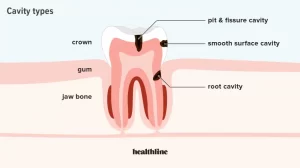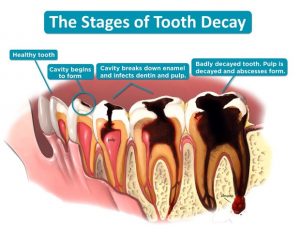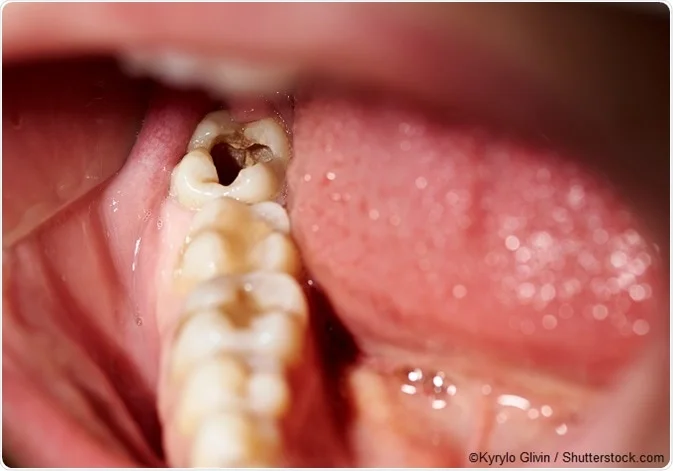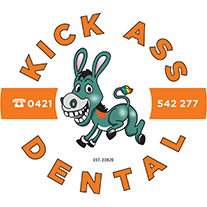How to Treat Tooth Decay: Effective Strategies for Dental Health
Understanding Tooth Decay
Tooth decay, also known as dental caries or cavities, is a common dental problem that affects people of all ages. It occurs when the outer layer of the tooth, known as enamel, becomes damaged due to acids produced by bacteria in the mouth. If left untreated, tooth decay can progress and cause severe pain, infections, and even tooth loss. However, with timely intervention and proper dental care, tooth decay can be effectively treated. Here are some strategies to help you combat tooth decay and maintain optimal dental health.
1. Regular Dental Check-ups
Regular dental check-ups are essential for preventing and treating tooth decay. Dentists can identify early signs of decay, such as small cavities or weakened enamel, through a thorough examination and dental X-rays. These routine visits allow your dentist to catch and treat tooth decay before it progresses, preventing the need for more extensive procedures.
2. Dental Fillings
If tooth decay is detected, your dentist may recommend a dental filling. This procedure involves removing the decayed portion of the tooth and filling the cavity with a material such as composite resin or amalgam. Dental fillings restore the function and structure of the affected tooth, preventing further decay and protecting it from bacterial invasion.

3. Root Canal Treatment
In cases where tooth decay has advanced and affected the innermost layer of the tooth, the pulp, a root canal treatment may be necessary. This procedure involves removing the infected pulp, cleaning the root canal, and sealing it to prevent reinfection. Root canal treatment saves the natural tooth, alleviates pain, and restores its function with the help of a dental crown.
4. Dental Crowns
When tooth decay has progressed significantly, causing extensive damage to the tooth structure, a dental crown may be required. A dental crown is a custom-made cap that covers the entire visible portion of the tooth, providing protection and restoring its appearance and function. Crowns are typically made of porcelain, metal, or a combination of both, and they can strengthen weakened teeth affected by decay.
5. Fluoride Treatment
Fluoride treatment is an effective preventive measure against tooth decay. Dentists can apply fluoride varnishes, gels, or rinses to the teeth during a dental visit. Fluoride helps to strengthen the enamel, making it more resistant to acid attacks and decay. Regular fluoride treatments, along with proper oral hygiene practices, can significantly reduce the risk of developing new cavities.
6. Improved Oral Hygiene
A crucial aspect of preventing and treating tooth decay is maintaining good oral hygiene practices. Brush your teeth at least twice a day using a fluoride toothpaste, and don’t forget to clean the areas between your teeth with dental floss or interdental brushes. Additionally, incorporate an antibacterial mouthwash into your routine to further reduce the bacterial load in your mouth. For tooth decay information see here.
7. Healthy Dietary Habits
Your diet plays a vital role in dental health. Avoid sugary and acidic foods and beverages, as they contribute to tooth decay. Opt for a balanced diet rich in fruits, vegetables, whole grains, and lean proteins. Calcium-rich foods, such as milk and cheese, can help strengthen your teeth. If you do consume sugary or acidic foods, rinse your mouth with water afterward and try to brush your teeth after 30 minutes to minimize the acid’s effects.

8. Sealants
Dental sealants are a protective coating applied to the chewing surfaces of the back teeth (molars and premolars) to prevent tooth decay. The sealant material fills in the deep grooves and pits of the teeth, creating a barrier that shields them from bacteria and food particles. Sealants are particularly beneficial for children and teenagers, as they are more prone to developing cavities in these hard-to-reach areas.
9. Antibiotics
In cases where tooth decay has led to an infection or abscess, your dentist may prescribe antibiotics. Antibiotics help control and eliminate the infection, preventing it from spreading to other parts of the body. However, it’s important to note that antibiotics alone cannot treat the underlying tooth decay. They are used as an adjunct to dental procedures or as a temporary measure until definitive treatment can be performed.
10. Education and Prevention
Prevention is always better than cure when it comes to tooth decay. Educating yourself and your family about proper oral hygiene practices, the importance of regular dental visits, and the impact of diet on dental health can go a long way in preventing tooth decay. Encourage healthy habits, such as brushing and flossing, from an early age, and make dental care a priority for the entire family.
In conclusion, tooth decay is a common dental problem that can lead to serious complications if left untreated. By following a comprehensive approach that includes regular dental check-ups, dental fillings, root canal treatments, dental crowns, fluoride treatments, improved oral hygiene, healthy dietary habits, sealants, and, if necessary, antibiotics, you can effectively treat tooth decay and maintain optimal dental health. Remember, prevention is key, so prioritize education and preventive measures to keep your teeth strong and cavity-free.
With these strategies, you can take control of your dental health and enjoy a confident, healthy smile for years to come.





